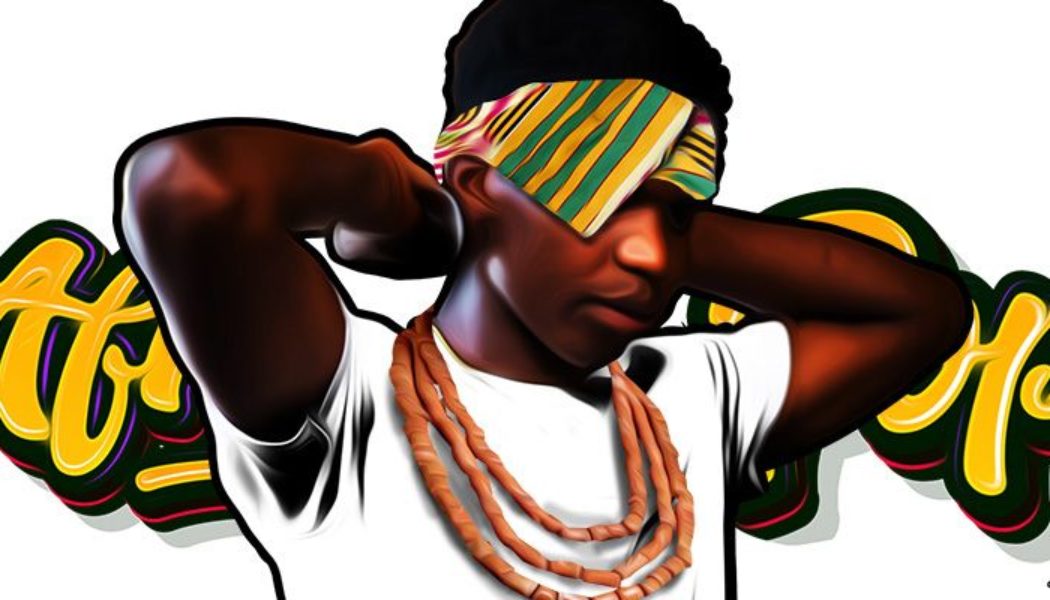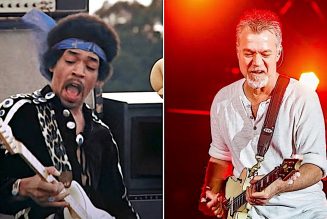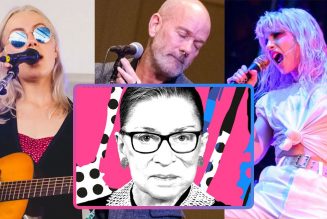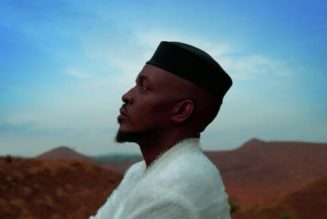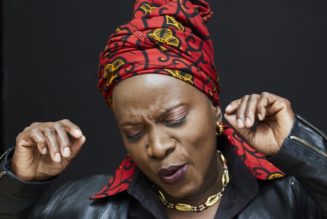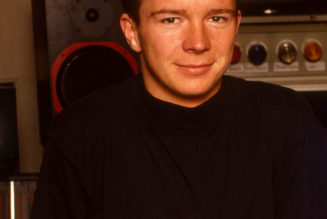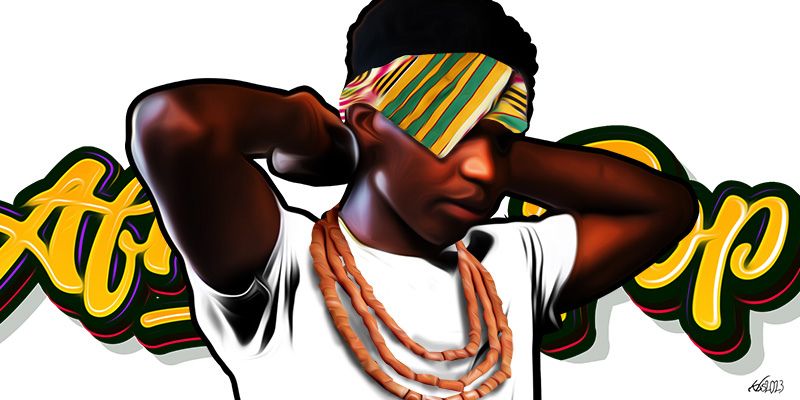
The 2023 Grammy Awards held on February 5th proved to be an unforgettable evening for music enthusiasts worldwide. Among the night’s standout performances was the highly anticipated celebration of hip-hop’s 50th anniversary. With a medley of iconic tracks spanning the genre’s different eras, the performance brought together a mix of revered veterans and current chart-toppers. Legends like Run-DMC, Salt-N-Pepa, DJ Jazzy Jeff, and Missy Elliott graced the stage, commemorating hip-hop’s rich history while highlighting its enduring relevance in popular culture.
Just a few weeks later, on February 20, another groundbreaking moment took place at the NBA All-Star Game halftime show. This time, an all-African ensemble comprising some of Nigeria’s biggest music acts delivered an electrifying performance. Grammy-winning singer Burna Boy, Grammy-nominated singer Tems, and the rising star rapper Rema shared the stage, capturing the attention of viewers worldwide. The show served as a powerful testament to the genre’s global appeal, transcending regional boundaries and demonstrating that hip-hop knows no limitations.
The NBA All-Star Game halftime show and the Grammy Awards celebration exemplify the ever-growing global popularity of hip-hop. Born in the streets of New York City, the genre has evolved into a transcendent cultural force enjoyed by people of all ages and from all walks of life. Its impact on popular culture cannot be overstated, as hip-hop has redefined music, fashion, dance, and social movements across the globe.
Hip-hop’s journey has seen it break free from its initial confines, expanding beyond American borders to reach audiences worldwide. It has become a global phenomenon that resonates with individuals from diverse backgrounds, languages, and cultures. The two events served as powerful reminders that hip-hop has come of age, solidifying its place as a musical genre that transcends boundaries and connects people globally.
Taking you back…
In the bustling streets of the Bronx, New York City, during the early 1970s, a cultural revolution was quietly taking shape. Born out of the creative expression of African Americans and later influenced by Latino and Afro-Caribbean identities, hip-hop music emerged as a groundbreaking art form. With influences ranging from spoken-word poetry to disco, funk, and soul, and the vibrant world of graffiti art, hip-hop soon became a powerful force that transformed music and culture forever.
Legend has it that the first official hip-hop event took place on the 11th of August 1973, with DJ Kool Herc‘s Back to School Jam. Held in the Bronx, this groundbreaking session marked a turning point in music history. DJ Kool Herc revolutionised the scene by employing two turntables to create music, seamlessly blending instrumental breaks from popular funk and soul records. These instrumental breaks, or “break-beats” provided a rhythmic foundation for dancers to showcase their skills, giving birth to a new style of dance and music that would soon become known as hip-hop.
Hip-hop’s journey has seen it break free from its initial confines, expanding beyond American borders to reach audiences worldwide.
As the hip-hop movement gained momentum, a group of trailblazers emerged to push its boundaries and shape its future. Afrika Bambaataa, with his eclectic tastes and visionary approach, expanded hip-hop’s horizons by incorporating diverse sounds and genres. Grandmaster Flash and the Furious Five revolutionised turntable techniques and introduced the art of scratching, further pushing the sonic boundaries of hip-hop. And then there was the Sugarhill Gang—a pioneering rap group consisting of Wonder Mike, Big Bank Hank, and Master Gee—who etched their names in history with the release of Rapper’s Delight in 1979. This seminal track is often hailed as the first commercially successful hip-hop song, introducing the genre to a wider audience and setting the stage for its mainstream breakthrough.
The song’s lyrics dropped knowledge and put the genre on blast, solidifying its spot in the mainstream and giving it a name that stuck;
“I said a hip-hop, the hippie, the hippie
To the hip, hip-hop and you don’t stop the rockin’
To the bang-bang boogie, say up jump the boogie
To the rhythm of the boogie, the beat…”
This infectious anthem not only introduced countless listeners to the mesmerising world of hip-hop music but also played a pivotal role in its international mainstream breakthrough. From the very first note, Rapper’s Delight commanded attention with its irresistible, toe-tapping beat. This infectious rhythm, coupled with the Sugarhill Gang’s charismatic delivery, instantly captivated listeners across various musical spectrums. However, it was the song’s positive, relatable lyrics that truly propelled it to new heights. Rapper’s Delight offered a light-hearted narrative that spoke to the shared experiences of many, making hip-hop accessible and appealing to a wider audience. It provided a glimpse into the vibrant culture and artistry of hip-hop, enticing listeners to dive deeper into this groundbreaking genre.
The unprecedented triumph of Rapper’s Delight laid the groundwork for countless hip-hop groups and artists to follow. Its impact reverberated through subsequent generations, influencing musicians across the globe and inspiring them to explore the limitless possibilities of hip-hop. From the birth of rap as an art form to the rise of sampling, scratching, and innovative production techniques, the legacy of Rapper’s Delight can be heard in every corner of hip-hop’s expansive tapestry. In the pantheon of groundbreaking songs, Rapper’s Delight holds a special place as the catalyst that transformed hip-hop from a local phenomenon into a global force to be reckoned with.
This infectious anthem not only introduced countless listeners to the mesmerising world of hip-hop music but also played a pivotal role in its international mainstream breakthrough.
From its humble beginnings in the Bronx, hip-hop has evolved into a global cultural phenomenon. Its impact has transcended borders, languages, and social barriers, becoming a voice for marginalised communities and a vehicle for self-expression. Beyond the music, hip-hop encompasses a multifaceted culture that includes fashion, art, dance, and a powerful storytelling medium through rap. The genre’s ability to reflect social realities and give voice to the voiceless has made it a driving force for change and empowerment.
As we look back on the origins of hip-hop, it becomes evident that its birth in the Bronx was just the beginning of a remarkable journey. The groundbreaking work of DJ Kool Herc, Afrika Bambaataa, Grandmaster Flash, the Furious Five, and the Sugarhill Gang paved the way for an entire movement that continues to captivate the world today. Hip-hop’s fusion of musical genres, its celebration of diverse cultural identities, and its powerful narratives have made it an enduring force in popular culture. From the streets to the Grammys, from the Bronx to every corner of the globe, hip-hop remains an indomitable expression of art, resilience, and the human spirit.
Hip-hop, rap, the griot and the spoken word
Hip-hop, a cultural force that has transcended borders and captivated millions, has deep roots that can be traced back to the West African tradition of griot storytelling. Griots, the esteemed keepers of history and oral traditions in their communities, wove rhythmic speech and music together to captivate listeners. This rich tradition evolved as Africans were forcibly brought to the Americas as slaves, where they used music and storytelling to preserve their culture and connect with one another.
The influence of West African griots on hip-hop is undeniable. The griots used instruments like the enchanting kora, a 21-stringed harp, to accompany their storytelling, infusing their narratives with rich melodies. While the direct presence of griots may have diminished in modern music culture, hip-hop and rap genres have paid homage to their craft. Notably, the jazz and hip-hop group Freestyle Fellowship titled their second album Inner City Griots, a project that garnered worldwide acclaim upon its release in 1993. This nod to the griot tradition symbolises the enduring legacy and inspiration drawn from the West African roots of hip-hop.
Another pivotal precursor to hip-hop music in the United States lies within the spoken-word tradition of African American poets. Figures like Langston Hughes and the Last Poets used rhythm and rhyme in their performances, often accompanied by music, to convey powerful messages. In the streets of the Bronx, early rappers were akin to street poets, improvising rhymes and narratives about their lives and surroundings. These emerging artists were deeply influenced by the Black Power and Civil Rights movements, infusing their music with potent political and social commentary.
From the streets to the Grammys, from the Bronx to every corner of the globe, hip-hop remains an indomitable expression of art, resilience, and the human spirit.
As hip-hop grew in popularity during the 1980s and 1990s, its infectious beats and captivating verses transcended borders, spreading to countries like France, Brazil, and South Africa. Local rappers in these regions began incorporating elements of their own cultures and languages into the music, creating a beautiful fusion of global influences. This cultural exchange allowed hip-hop to serve as a powerful platform for self-expression and a means of preserving local traditions while adding a contemporary touch.
Despite its global popularity and immense cultural impact, hip-hop and rap music have faced criticism and controversies throughout their journey. The genre has been the subject of scrutiny, with debates surrounding its lyrical content, portrayal of women, and glorification of violence. However, it is important to recognise that hip-hop is a complex and multifaceted art form that reflects the realities and experiences of its creators, representing both the triumphs and the challenges faced by marginalised communities.
“In hip-hop music, misogyny relates to any aspect of rap that supports or normalises the objectification, exploitation and victimisation of women.”
Rap music, an art form that both divides and unites, has been at the centre of fervent debates. Accusations of promoting violence, misogyny, and negative stereotypes have fuelled discussions, while proponents argue that rap serves as a vital platform for artistic expression, amplifying the voices of marginalised communities.
While debates surrounding rap’s content persist, it is undeniable that the genre is deeply intertwined with African culture and the struggle for societal recognition. From its origins in African griot storytelling traditions to the spoken-word performances of African American poets, rap music has become a modern-day vehicle for cultural resilience. By channelling experiences of adversity, triumph, and social injustice, rappers use their verses to challenge the status quo and shed light on the realities faced by marginalised communities.
It stands as a testament to these communities. It serves as a dynamic form of artistic expression that transcends borders, cultures, and languages, uniting individuals from all walks of life. While debates surrounding rap’s content and impact endure, it is crucial to appreciate the genre’s role as a powerful tool for social commentary, cultural expression, and personal empowerment. As rap continues to evolve, it remains an indomitable force, unafraid to confront uncomfortable truths and challenge the norms of a rapidly changing world.
Hip-hop’s influence on other music genres
Throughout its illustrious fifty-year history, hip-hop has transcended its origins to become a force that permeates various musical genres. From its distinctive beat repetition and production techniques to collaborations with artists from different backgrounds, hip-hop has left an indelible mark on pop, electronic, rock, and R&B.
At the heart of hip-hop’s impact lies its innovative production techniques. The genre’s signature use of break-beats, loops, and samples has not only defined hip-hop itself but also resonated with artists from diverse genres. Influenced by hip-hop, musicians in electronic, pop, and even rock music have adopted these techniques to create infectious tracks that captivate listeners. Notable examples include The Beastie Boys’ genre-defying The New Style and Dr. Dre’s groundbreaking album The Chronic, both demonstrating the power of samples and synthesisers in crafting iconic soundscapes.
“In hip-hop music, misogyny relates to any aspect of rap that supports or normalises the objectification, exploitation and victimisation of women.”
Indeed, hip-hop popularised the use of sampled music and beats, which has spread to other genres. Producers and artists from different styles of music now regularly utilise sampling in their works. There are a myriad examples of this, including the first major hit by the Sugarhill Gang’s Rapper’s Delight which sampled 1979’s hit Good Times from the group Chic.
The collaborative nature of hip-hop has paved the way for groundbreaking cross-genre projects. By joining forces with artists outside the hip-hop realm, musicians have forged innovative tracks that transcend traditional boundaries. Iconic collaborations such as Jay-Z and Linkin Park’s Numb/Encore and The Gorillaz and De La Soul’s Feel Good Inc. exemplify the successful fusion of hip-hop with other genres, showcasing the possibilities of musical experimentation and broadening audiences’ horizons.
Fashion, culture, and the art of storytelling
Hip-hop’s influence extends far beyond music, however, permeating fashion trends and popular culture. Artists across genres have embraced elements of hip-hop fashion, solidifying its impact on the broader cultural landscape. Notable instances, such as the fashion statements made by basketball icons like Allen Iverson in the NBA during the 1990s, highlight hip-hop’s ability to shape and redefine societal norms, prompting even formal dress codes in professional sports.
One of hip-hop’s most enduring legacies is its lyrical prowess and storytelling tradition. The genre’s ability to weave compelling narratives has inspired artists from diverse backgrounds to adopt a storytelling approach in their music. Eminem’s haunting masterpiece Stan, featuring Dido, serves as a vivid example, capturing the chilling tale of an obsessed fan whose fixation spirals into tragedy. This fusion of storytelling and music garnered critical acclaim and earned nominations at prestigious awards shows.
African culture’s influence on hip-hop
The essence of hip-hop lies in its roots, deeply intertwined with the vibrant tapestry of African culture. From rhythmic drumming patterns to call-and-response techniques, the influence of Africa can be heard resonating through the beats, lyrics, and symbols of hip-hop music.
African drumming traditions have left an indelible mark on hip-hop beats, infusing them with a captivating energy and complexity. The syncopated rhythms and polyrhythmic patterns that define African drumming find their way into the heart of hip-hop music. Pioneers like Afrika Bambaataa, a true ambassador of African influence, not only embraced these rhythms but also used his platform to form the (Universal) Zulu Nation, an entity that propelled hip-hop’s global reach.
The call-and-response technique, deeply embedded in African musical traditions, found a natural home within the fabric of hip-hop. From the early days of The Sugarhill Gang to contemporary acts like Migos and Run the Jewels, the art of rapping became a dynamic interplay of voices, mirroring the call-and-response tradition’s rich heritage. This rhythmic conversation between artists became a signature of hip-hop’s storytelling prowess and a reflection of African musical heritage.
By joining forces with artists outside the hip-hop realm, musicians have forged innovative tracks that transcend traditional boundaries.
Hip-hop producers have consistently tapped into the rich soundscape of African music, sampling traditional melodies, rhythms, and instrumentation to create powerful sonic landscapes. By drawing from the motherland, they pay homage to Africa’s musical legacy while infusing their creations with a distinctive and resonant energy. Rihanna’s iconic hit Please Don’t Stop the Music featuring a sample from Manu Dibango’s Soul Makossa exemplifies how African influences can elevate contemporary hip-hop tracks.
African symbols and cultural motifs have become an integral part of hip-hop’s visual language. Artists have embraced African vernacular English in their lyrics, immersing their music in the rich tapestry of African culture. The fusion of African-inspired fashion, featuring garments like dashikis, kente cloth, and Ankara prints, has further elevated hip-hop’s connection with African aesthetics. Icons such as Fela Kuti, Erykah Badu, and Burna Boy have masterfully incorporated African fashion into their music and performances, becoming cultural ambassadors.
Afrofuturism, a movement blending African culture with science fiction, has found fertile ground within hip-hop’s creative realm. Artists like Sun Ra, George Clinton, and Janelle Monae have embraced Afrofuturist themes, infusing their music with cosmic visions and explorations of African identity. Moreover, hip-hop’s Afrocentric lyrics and themes amplify voices that address issues of identity, social justice, and the African diaspora. Songs like Queen Latifah’s empowering anthem “U.N.I.T.Y.” and Common and John Legend’s stirring “Glory” stand as testaments to hip-hop’s role in advocating for change and celebrating African heritage.
As hip-hop propels forward on its evolutionary odyssey, its inseparable bond with African culture remains unwavering. The genre continues to draw inspiration from the vast tapestry of African traditions, ensuring its constant reinvention and unwavering commitment to amplifying diverse voices and narratives. The burgeoning interest in African culture within the global music industry, manifested through events like Afropunk and the BET Awards, underscores the timeless allure and boundless creativity that African music and culture bestow upon the world stage.
